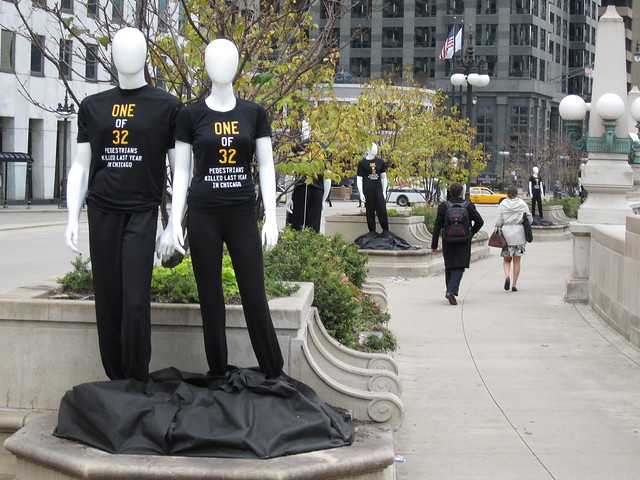[flickr]photo:6433633069[/flickr]
Chicago and Chicagoland communities have officially adopted plans to provide more transportation opportunities, reduce obesity, and increase access to open space; they list how bicycling is or can be a strategy to achieve a healthy city, a bike-friendly city, and a green city. Here’s a sampling of those agendas:
I’d like there to be a Chicago-wide comprehensive plan that addresses goals and strategies outside the scope of these plans but still includes these efforts. A plan that concentrates on transit, congestion, on crime and safety, housing, education and the economy. Its purpose would be the same as the other plans, to outline targets and intentions and measures of achievement, but also to ensure that no plan and the people implementing the plan were working at cross-purposes. For example, if there’s a plan to increase the number of people who bike and the number of people who take transit, are the implementers of each plan working together to ensure a citizen’s smooth transition from one mode to the other in a single trip? Another example: If a goal is to increase the number of people who take transit, are implementers making buses run more on time by reducing single occupancy vehicle congestion and giving buses priorities at signals, two strategies that would speed up bus movement and make it easier to create a schedule they could stick to?
A plan like this that comes to mind is PlaNYC. From the article on Wikipedia about PlaNYC:
PlaNYC is an effort released by New York City Mayor Michael Bloomberg in 2007 to prepare the city for one million more residents, strengthen the economy, combat climate change, and enhance the quality of life for all New Yorkers. The Plan brought together over 25 City agencies to work toward the vision of a greener, greater New York. PlaNYC specifically targets ten areas of interest: Housing and Neighborhoods; Parks and Public Spaces; Brownfields; Waterways; Water Supply; Transportation; Energy; Air Quality; Solid Waste; Climate Change.
Updated 21:36 to add more plans, thanks to the commenters.
